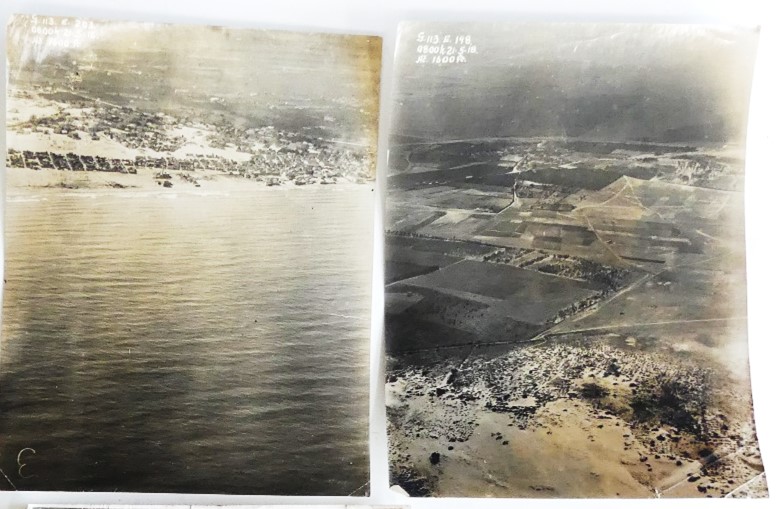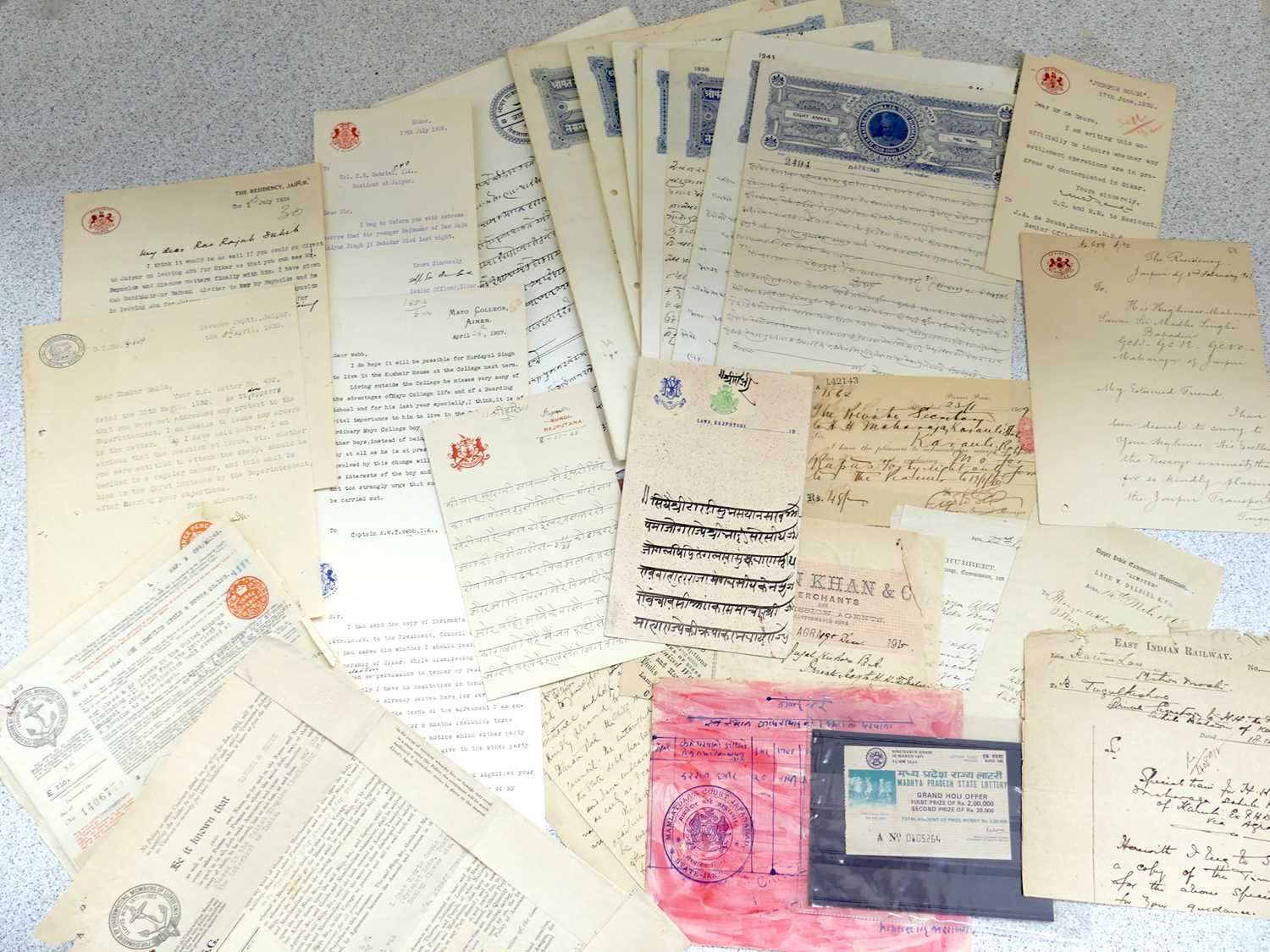Through adversity to the stars - WW1 medal and ephemera collection
Lot 510 in our 6th December Medals & Militaria auction is a remarkable collection of First World War medals and ephemera belonging to Lieutenant Douglas Alliban DFC (1898-1971) of the Sherwood Foresters / Nottinghamshire and Derbyshire Regiment, Royal Flying Corps & Royal Air Force.
It offers a fascinating insight into one incredibly brave man’s experience as a pilot in the nascent field of aerial photography during World War One in the ever-volatile Middle East.
Douglas Alliban was the younger son of William Henry and Georgina Maud (nee Beaumont) and was brought up at Tupton Hall in Chesterfield, Derbyshire. He enlisted with the Sherwood Foresters / Nottinghamshire & Derbyshire Regiment along with his older brother (by one year), William Beaumont Alliban, and joined the Royal Flying Corps in August 1916. Despite the fact that serving as aircrew in this incredibly early age of flying was considered one of the most dangerous roles in World War One, Douglas survived the war, but his brother Lieutenant William Beaumont was tragically killed at St Quentin in 1917, aged 20, and is commemorated at Thiepval.
After flight training, Douglas became a member of No. 113 Squadron, which began service in 1917 with the Egyptian Expeditionary Force commanded by General Edmund Allenby. Initially, the squadron was a unit of the Royal Flying Corps, serving during the Sinai and Palestine Campaign as a reconnaissance, bomber, transport and missile operation squadron. The Royal Flying Corps (later RAF) itself had only been formed in 1912 as the air arm of the British Army, with the Middle East Brigade being established in July 1916. Despite being a relatively small unit, the RFC gave valuable assistance to the Army in the eventual defeat of Ottoman forces in Palestine, Trans Jordan and Mesopotamia (Iraq).
Crucial to this was the role of aerial photography, which revolutionised the nature of warfare by enabling the accurate recording of enemy movements and defences, as well as mapping lesser-known terrain. However, this work was extremely hazardous, which is attested by many hair-raising accounts recorded in Alliban’s notebooks. Initially, the aircraft were generally unarmed, with the observer leaning over the side of the aircraft, camera in hand and changing plates with frozen fingers thousands of feet above land. And that’s before you take into account the presence of enemy aircraft.
Alliban's log book coolly records regular instances such as "Engine failure. Had to land at Gamli. Guest of ANZAC Yeomanry... Working all night in sandstorm" and "Very foggy. Had to come down to within 50ft at times. Engine very bad. Cut out just near 'drome".
.JPG) Further to the military aspect, this collection contains fascinating personal details; from the photographs of fellow officers relaxing around their tents and Palestinians going about their business, to Alliban’s obvious captivation with this new environment he found himself in “Cairo is a topping place, even better than Alexandria. This hotel is absolutely the last word in Hotels” about Shepheard’s Hotel in Cairo (previously Hotel des Anglais). Also touching is the plumed silver Scoutmaster badge which Alliban carried with him as a lucky charm, which may have originally belonged to his brother who is recorded as working with the boy scouts while at Chesterfield Grammar School. Maybe the lucky charm worked for Douglas though, as the last pasted-in photograph in his notebooks shows a crashed aeroplane nose-down in the desert, which Alliban has forcefully annotated ‘Not mine’.
Further to the military aspect, this collection contains fascinating personal details; from the photographs of fellow officers relaxing around their tents and Palestinians going about their business, to Alliban’s obvious captivation with this new environment he found himself in “Cairo is a topping place, even better than Alexandria. This hotel is absolutely the last word in Hotels” about Shepheard’s Hotel in Cairo (previously Hotel des Anglais). Also touching is the plumed silver Scoutmaster badge which Alliban carried with him as a lucky charm, which may have originally belonged to his brother who is recorded as working with the boy scouts while at Chesterfield Grammar School. Maybe the lucky charm worked for Douglas though, as the last pasted-in photograph in his notebooks shows a crashed aeroplane nose-down in the desert, which Alliban has forcefully annotated ‘Not mine’.
Alliban was mentioned in dispatches for “gallantry and devotion to duty” for work from March to September 1918. His old school Eastbourne College’s roll of honour upon receipt of the DFC states that “His keenness and fearlessness have earned for him a high reputation. He has done most valuable work for his Squadron as a pilot, and is to be relied on at all times”. Sadly, this is listed above his brother, a fellow student, along with details of his death in France.
The lot contains:
Distinguished Flying Cross awarded in the New Year’s Honours 1919.
1914-1918 Victory Medal and War Medal with miniatures and oak leaves.
Pilot's log book dating from September 1916 (Hendon), 1917 (Hounslow then Ismalia, Egypt and Sarona, Palestine/now Israel, as part of 113 Squadron and briefly 14 Squadron), through to October 1918 (total hours flown 638 hours, 50 mins), before joining 145 Squadron on 6th October 1918. The log details observation / reconnaissance, artillery patrols and bombing missions, machines flown, times, heights and other notes.
Three hand-written notebooks covering September 1917 – July 1918 containing Alliban’s personal experiences and thoughts, sightseeing and learning of the area’s history, flying experiences and near-misses (including describing the “magnificent show” in which Captain Peter Drummond D.S.O. M.C. single-handedly engaged six German aircraft; Alliban hopes he is awarded a bar for his DSO after that - he was), stuck-in photographs / newsletter / newspaper articles and a Christmas 1917 dinner menu signed by fellow officers.
A collection of observation and reconnaissance aerial photographs showing Jerusalem, Tabsor, Jaffa and Kerak etc (many coded with squadron and map references to the upper corners).
Personal photographs including a group shot of officers to include Captain Norton MC, Major Cutbill and Lieutenant Dutton MC, and a photograph of a Nieuport Scout annotated verso ‘my machine’.
Ephemera to include newspaper clippings, ‘Instructions for Contact Patrol Work by Aeroplanes’ leaflet issued by the General Staff in 1916 and copy of birth certificate.
Second World War certificate for service with the Air Training Corps and approval note from the Air Ministry.
Rosary beads and a ‘lucky charm’ silver Scoutmaster plumed hat badge.





